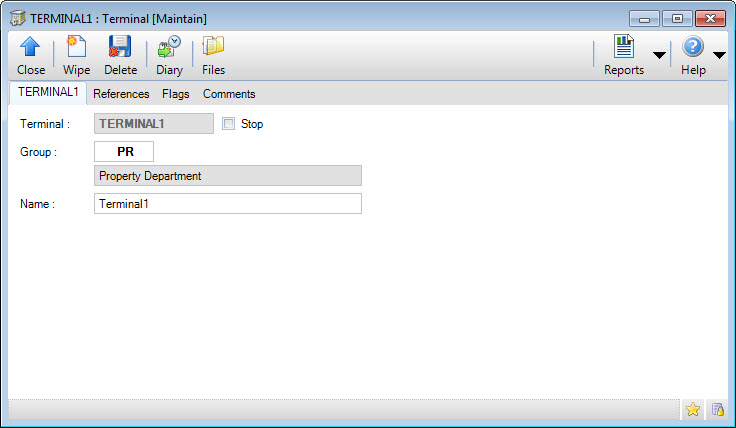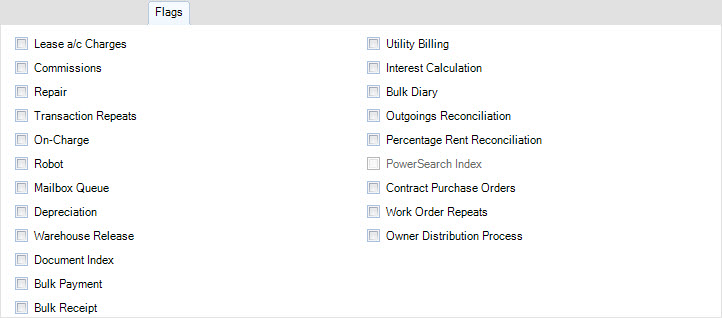
Menu
| System | > | Terminal |
Mandatory Prerequisites
Prior to creating a Terminal, refer to the following Topics:
Screenshot and Field Descriptions: Terminal Tab

Terminal: this is the primary identifier for the Terminal.
Stop: this check box determines whether or not a ”Stop” has been put on the Terminal. By ticking this check box, the Terminal will be made unavailable to Operators attempting to login.
Group: this determines the Group that the Terminal belongs to.
Name: this is the friendly name given to the Terminal. Examples might be ”Front Desk Computer”, or ”John Smith’s Laptop”.
Screenshot and Field Descriptions: Flags Tab

This tab contains check boxes for each of the exclusive batch processes in the system. Exclusive processes are so named because they should only ever be run from one Terminal at a time. When you put a tick in an exclusive batch process on a Terminal record, and save the record, any other Terminal record that has that exclusive batch process selected will lose it. Only one Terminal can have access to an exclusive batch process.
Note: Changes to Terminal flags do not take effect until you shut down and restart the application. Likewise, changing Terminal flags will not affect other users until they also shut down and restart the application.
Note: Your specific installation may have specific site settings to allow multiple Terminals access to some exclusive functions. If you have any questions regarding this, please contact your Progenesis representative.
Shared or Site Optional Tabs
Other than Tabs described specifically in this Topic, the following may also be available (depending on Site Settings):
How Do I : Search For and Maintain Entities
These General Rules are described in the Fundamentals Manual: How Do I : Search For and Maintain Entities
How Do I : Modify an existing Terminal
How Do I : Delete an existing Terminal
Note: A Terminal record can only be deleted if there are no other records associated with it. An example of an associated record might be an Audit entry.
How Do I : Suspend / Reinstate an existing Terminal
Terminals are associated with the following Topics: